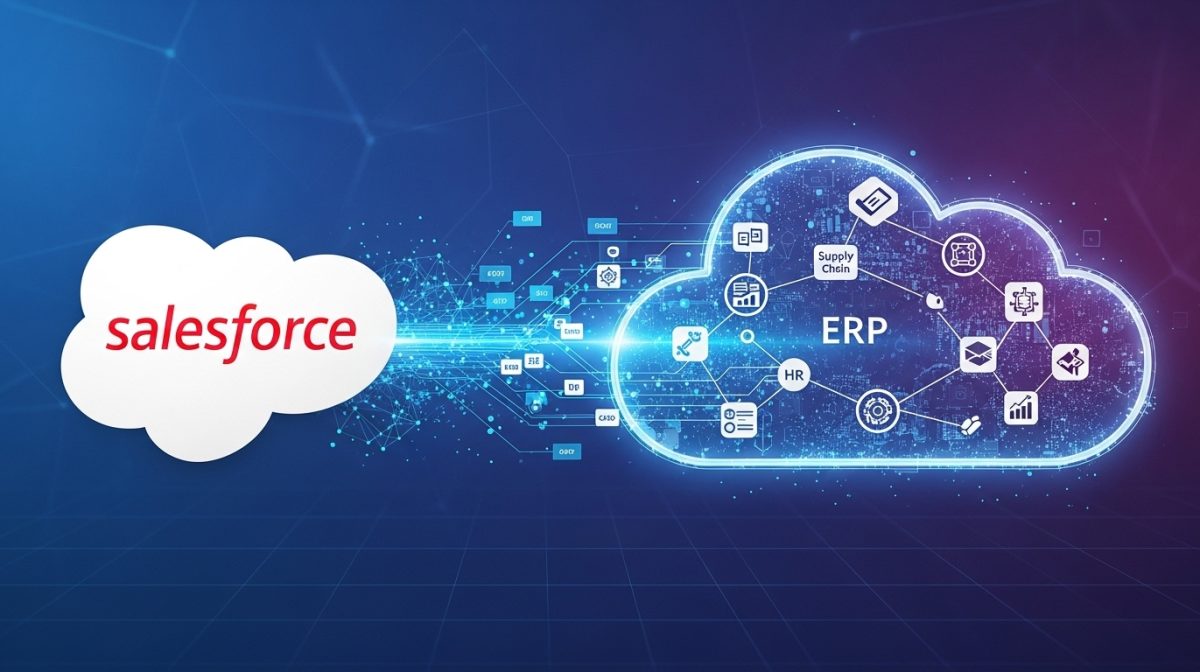Driving Growth and Efficiency with Cloud ERP for Salesforce Users

Businesses today face increasing complexity in managing finances, operations, and supply chains while also maintaining customer-centric strategies. Traditional enterprise resource planning (ERP) systems, often siloed and on-premise, struggle to keep pace with this fast-changing landscape. Modern organizations require solutions that are agile, scalable, and integrated with customer relationship management. That’s why more companies are adopting Cloud ERP for Salesforce users, a unified system that combines ERP functionality with Salesforce’s powerful CRM platform.
This article explores the challenges of legacy ERP, the features and benefits of cloud ERP solutions integrated with Salesforce, and how they are transforming the way organizations manage their operations.
The Limitations of Traditional ERP
Legacy ERP platforms were designed to centralize back-office functions like finance, procurement, and inventory management. While useful, they often present significant limitations:
- Siloed systems: Traditional ERP is disconnected from customer-facing platforms like CRM.
- High costs: On-premise infrastructure requires large upfront investments and ongoing maintenance.
- Limited scalability: Expanding globally or adding new business units can be slow and costly.
- Slow reporting: Executives lack real-time insights into financials and operations.
- Complex integrations: Connecting ERP with sales, marketing, or service platforms often requires custom builds.
These issues hinder agility, reduce visibility, and prevent businesses from fully aligning operations with customer demand.
What is Cloud ERP for Salesforce Users?
Cloud ERP for Salesforce users is a Salesforce-native solution that integrates enterprise resource planning capabilities directly into the Salesforce platform. Unlike standalone ERP systems, this approach unifies financial management, inventory control, supply chain operations, procurement, and order fulfillment with customer relationship management.
Because it runs in the cloud, businesses benefit from scalability, cost savings, and automatic updates. And because it’s Salesforce-native, teams work from a single source of truth, ensuring that sales, operations, and finance are fully aligned.
Key Features
Financial Management
Includes accounts payable, receivable, budgeting, forecasting, and reporting tools. Finance teams gain real-time insights into cash flow and profitability.
Inventory and Warehouse Management
Tracks stock levels across multiple warehouses, automates replenishment alerts, and integrates inventory data with sales and procurement.
Procurement and Vendor Management
Enables businesses to manage purchase orders, vendor contracts, and approvals directly in Salesforce, linked to budgets and operational needs.
Order and Logistics Management
Sales orders flow seamlessly from Salesforce CRM into ERP workflows for production, fulfillment, and logistics coordination.
Manufacturing and Operations
For manufacturers, production planning, scheduling, and resource allocation are integrated with inventory and sales forecasts.
Expense and Project Tracking
Links expenses and resources directly to projects, enabling accurate profitability analysis.
Analytics and Dashboards
Provides executives with real-time KPIs on financial health, inventory turnover, fulfillment rates, and customer performance.
Compliance and Audit Trails
Every transaction is digitally recorded, ensuring compliance with financial and regulatory standards.
Benefits of Cloud ERP for Salesforce Users
Single Source of Truth
Sales, finance, and operations teams access the same data in Salesforce, eliminating silos and reducing errors.
Customer-Centric Operations
Customer demand and sales forecasts directly inform procurement, production, and logistics, ensuring better alignment.
Operational Efficiency
Automation reduces manual work in approvals, reconciliations, and reporting, freeing employees to focus on strategic initiatives.
Real-Time Visibility
Executives gain immediate insights into costs, performance, and cash flow, supporting faster decision-making.
Scalability
Cloud ERP grows with the business, supporting new locations, product lines, and global operations.
Cost Savings
Cloud deployment eliminates the need for on-premise infrastructure and lowers IT maintenance costs.
Improved Compliance
With digital audit trails and standardized workflows, businesses simplify compliance with local and global regulations.
Practical Use Cases
Retail and E-commerce
Salesforce orders automatically flow into inventory and logistics workflows, ensuring accurate stock levels and timely delivery.
Manufacturing
Manufacturers align production schedules with Salesforce sales data to optimize resource use and reduce delays.
Healthcare and Pharmaceuticals
ERP ensures regulatory compliance while streamlining procurement and logistics for sensitive products.
Professional Services
Project costs and revenues are tracked in Salesforce, enabling accurate billing and profitability analysis.
Global Enterprises
Companies standardize financial and operational processes across regions while supporting multi-currency and multi-language operations.
Why Salesforce as the Foundation?
Salesforce provides the ideal foundation for ERP because of its scalability, flexibility, and security. Advantages include:
- Unified data environment: Customer, sales, and operational data coexist in a single platform.
- Customization: Workflows and dashboards can be tailored to fit specific business needs.
- Enterprise-grade security: Protects sensitive financial and operational data.
- Scalability: Supports small businesses and global enterprises alike.
- Ecosystem support: Salesforce AppExchange offers complementary apps to extend ERP functionality.
By embedding ERP into Salesforce, organizations reduce integration complexity and ensure that their systems evolve together.
Implementation Best Practices
To ensure success with Cloud ERP for Salesforce users, businesses should:
- Assess existing workflows to identify inefficiencies.
- Define clear goals, such as reducing costs, improving delivery times, or increasing visibility.
- Begin with a phased rollout, starting with finance or inventory, before scaling company-wide.
- Train employees across departments to ensure adoption.
- Monitor KPIs like order cycle time, stock accuracy, and cash flow forecasting.
- Continuously refine workflows and dashboards using Salesforce insights.
The Future of Cloud ERP
The future of ERP lies in greater intelligence, automation, and predictive capabilities. Salesforce-native ERP is already moving toward:
- AI-driven forecasting for demand, cash flow, and resource planning.
- IoT integration for real-time tracking of goods across supply chains.
- Predictive maintenance for manufacturing and logistics equipment.
- Automated compliance monitoring across international regulations.
- Sustainability tools to measure and reduce supply chain carbon footprints.
These advancements will transform ERP from a reactive system into a proactive driver of growth and innovation.
Conclusion
Traditional ERP systems are no longer sufficient for organizations that require agility, real-time insights, and seamless customer alignment. Cloud ERP for Salesforce users provides a modern, integrated solution that unifies finance, inventory, procurement, and operations with Salesforce CRM.
For finance teams, it delivers accurate, real-time reporting. For operations, it ensures efficient procurement, logistics, and manufacturing. For executives, it provides a 360-degree view of business performance.
By adopting a Salesforce-native cloud ERP, businesses gain the scalability, agility, and customer-centric focus needed to thrive in today’s competitive market.





